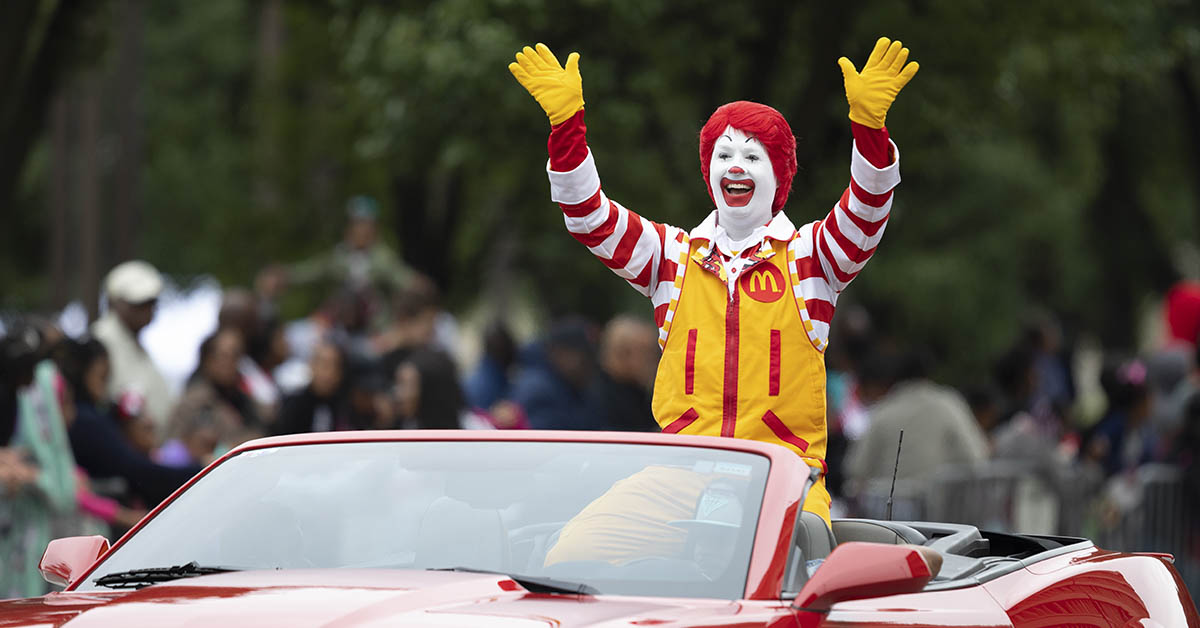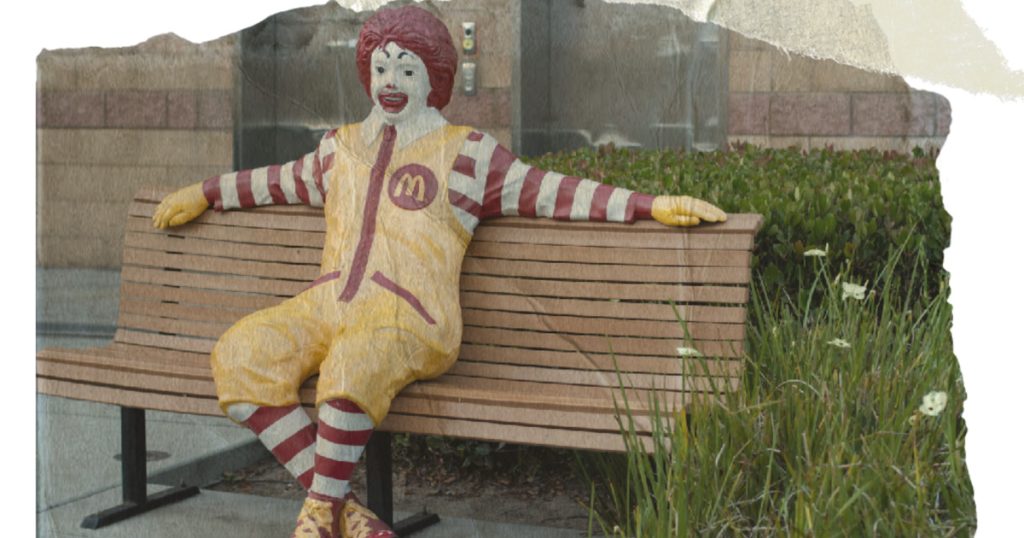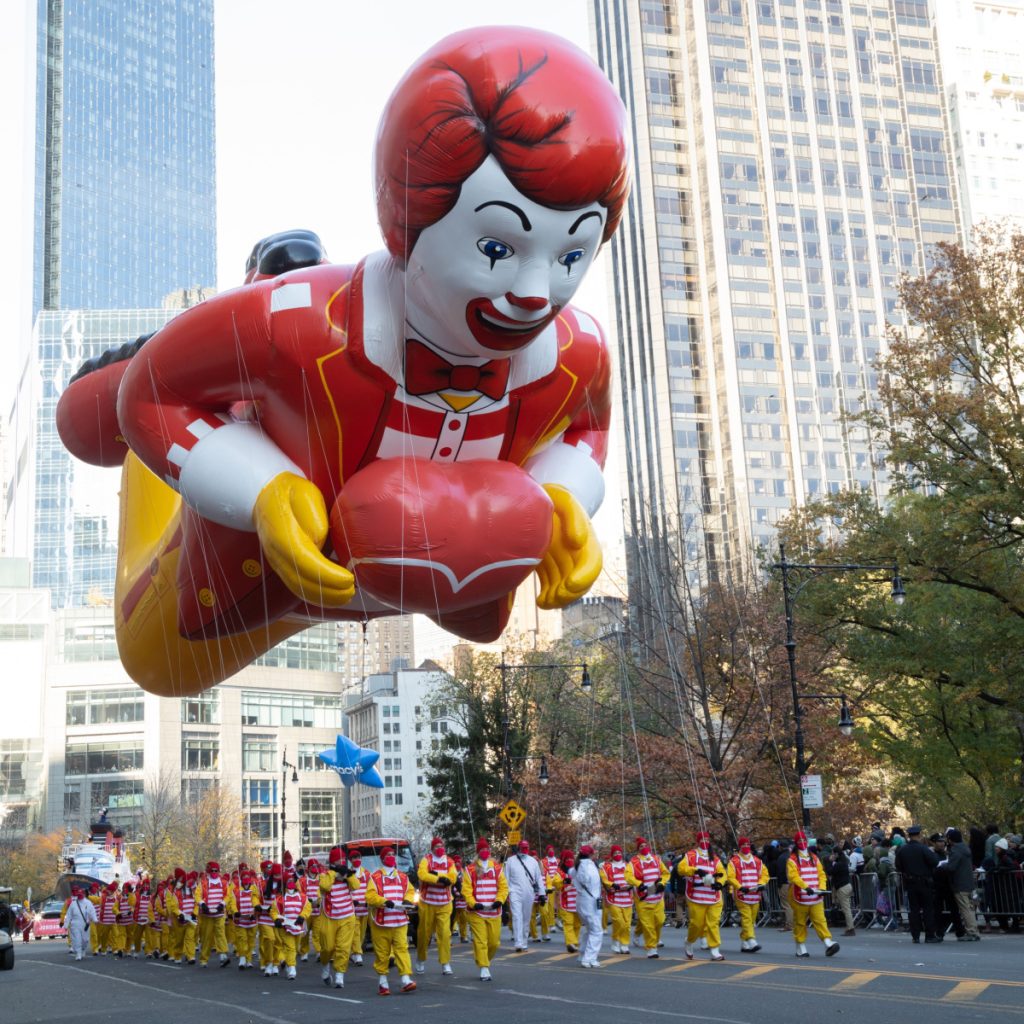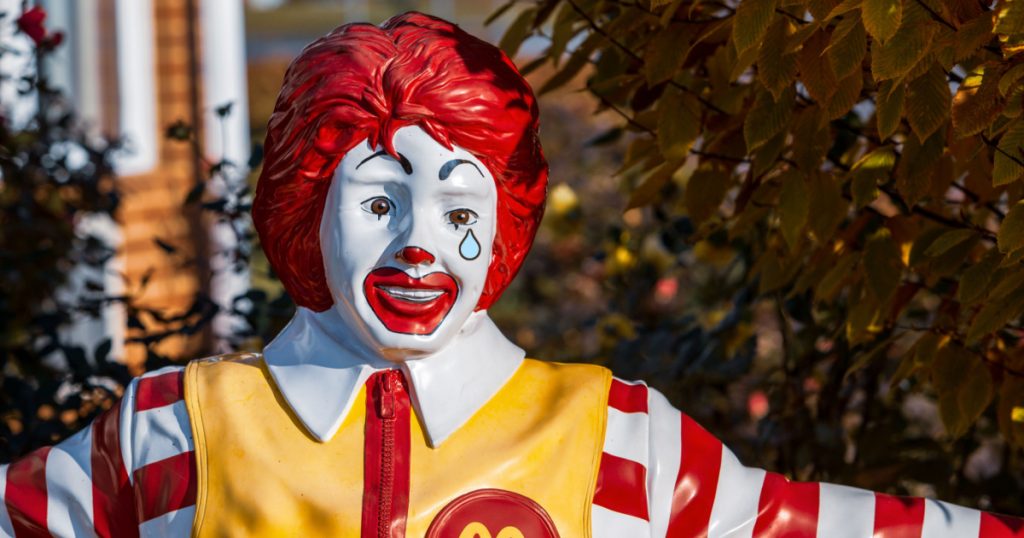When you think of McDonald’s, it’s hard not to conjure the image of their iconic clown mascot, Ronald McDonald. For decades, this cheerful character was synonymous with the fast-food giant, but his role in the company dramatically shifted in 2016.1 What led to his sudden disappearance from the limelight? In this article, we delve into the intriguing story behind the clown’s vanishing act and the factors that contributed to his exit.
The Creepy Clown Craze
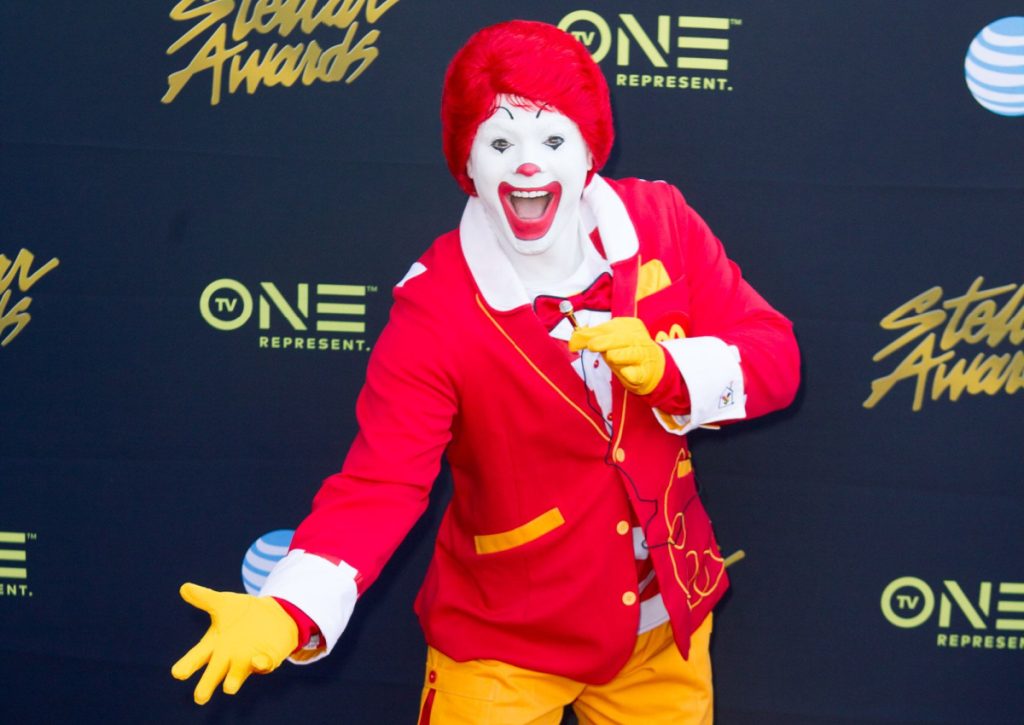
In 2016, a bizarre phenomenon swept across the United Kingdom and the United States: the “creepy clown” trend. People began dressing up as menacing clowns, terrorizing communities, and even wielding weapons.2 The chilling reports of these incidents prompted McDonald’s to take action. In response to the unsettling climate created by these clown sightings, the company decided to sideline Ronald McDonald from its advertising campaigns. They cited concerns for public safety and community well-being as the main reasons for this move.
This decision, while surprising to some, was McDonald’s way of distancing itself from the unsettling clown imagery that had taken hold of the public’s imagination. The move reflected the company’s commitment to safety and sensitivity to the concerns of its customers.
Unhealthy Marketing
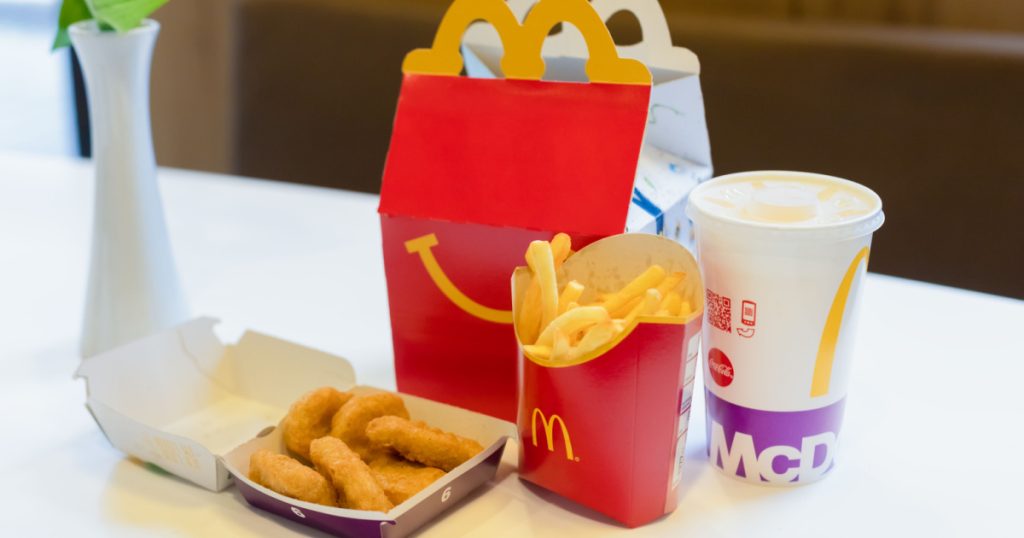
Ronald McDonald had been the face of the company since the 1960s, but he faced mounting criticism for promoting unhealthy fast food to impressionable children. Critics argued that he played a role in childhood obesity. This public relations challenge led McDonald’s to reevaluate their marketing strategy. Former CEO Don Thompson tried to defend Ronald but found it challenging, especially with the increasing scrutiny on children’s diets.3
The criticism prompted McDonald’s to shift its advertising focus away from children and toward adults. This transition aimed to address concerns about the impact of fast food on children’s health and to adapt to changing societal expectations. Despite his child-friendly persona, the mascot no longer fit into this new marketing direction.
